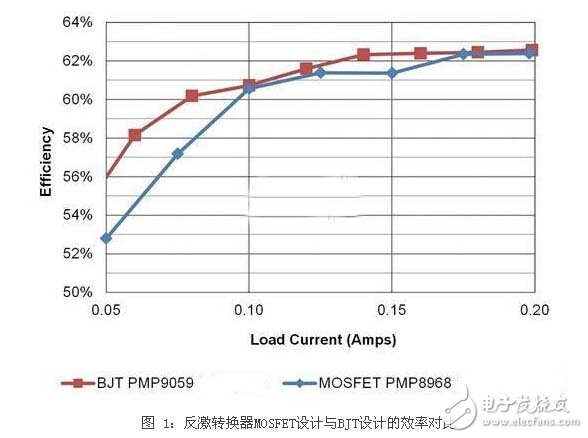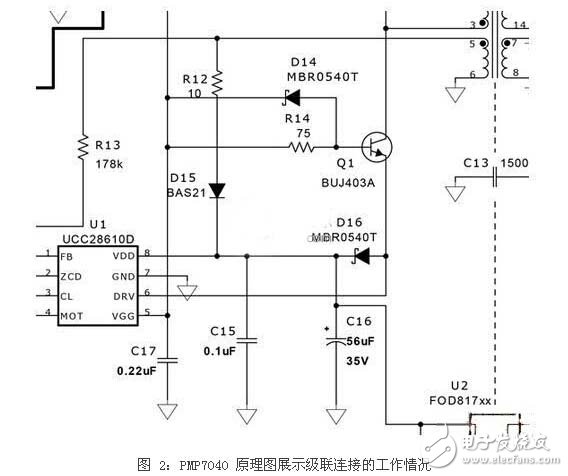Switching Power Supply Design: When is BJT better than MOSFET?
MOSFETs are already the absolute main components in the field of switching power supplies. However, in some instances, bipolar junction transistors (BJTs) may still have certain advantages over MOSFETs. Especially in off-line power supplies, cost and high voltage (greater than 1kV) are two reasons to use BJT instead of MOSFET.
In low-power (3W and below) flyback power supplies, it is difficult to beat BJT in terms of cost. A 13003 NPN transistor can be priced as low as $0.03 when purchased in large quantities. The device can handle not only 700V VCE, but also a few hundred milliamps of current without excessive base current. With BJT, gain and power dissipation may limit practical use to low power applications. Under these low power standards, the efficiency difference between MOSFET and BJT is very small. Figure 1 below compares the efficiency of two similar 5V/1W designs. The first design uses a MOSFET with a "230VAC input, 5.5V/250mA non-isolated flyback converter" and another design with a "120VAC input, 5V/200mA flyback converter" using BJT. This is not a completely fair comparison because the two power supplies are designed to operate with different input voltages, but it shows how similar they are.

Some new controllers are actually designed to drive BJTs with the goal of providing the lowest cost solution. In most cases, controllers with external BJTs are less expensive than controllers with integrated MOSFETs. When designing with a BJT controller, care must be taken to ensure that the base drive and gain of the BJT is sufficient to provide the necessary peak current in the transformer.
At slightly higher power levels, the difference in efficiency between the FET and the BJT becomes more pronounced due to the poor switching characteristics and voltage drop of the BJT. However, for applications with input voltages above the typical residential and commercial voltage range of 100-240 VAC, BJT may still have an advantage. Industrial applications and power meters are two examples of this situation, which may require higher input voltages. Affordable MOSFETs can only be used below 1kV. In some power meter applications, the line voltage may exceed 480VACrms. It will reach voltages above 680Vdc after the rectifier. For three-phase inputs, this number may be even higher. The power switch needs to be able to withstand this voltage as well as the reflected output voltage and leakage peaks. In these applications, MOSFETs may not be an option at all, so BJT is the simplest and lowest cost solution.
As we discussed earlier, when the power level is increased above 3W, the switching loss in the BJT may become a big problem. Using a cascading connection to drive BJT can alleviate this problem. Figure 2 below (extracted from PMP7040) is the operation of the cascade connection. The base of the BJT (Q1) is connected to the VCC rail and the emitter is pulled low to open the switch. Inside the UCC28610, a low-voltage MOSFET pulls the DRV pin low and an internal current sense is used to schedule the peak switch current. The fast turn-off is achieved by the internal MOSFET because it is in series with the external high voltage BJT.

In short, BJT may be important in your power supply, there are still some reasons. In applications below 3W, they may have a low cost advantage without affecting performance. At higher voltages, they offer more options where MOSFET selection may have limitations.
ZGAR OPEN SYSTEM - ZENITH SERIES
Zgar International (M) SDN BHD , https://www.szvape-pen.com